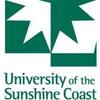| Title | Learning styles and learning spaces: enhancing experiential learning in higher education |
| Publication Type | Journal Article |
| Year of Publication | 2005 |
| Authors | Kolb A.Y., Kolb D.A |
| Journal | Academy of Management Learning and Education |
| Volume | 4 |
| Issue | 2 |
| Start Page | 193-212 |
| Keywords | change, Curriculum development, experiential learning, higher education, institutions, sustainable learning |
| Full Text |
Learning styles and learning spaces: enhancing experiential learning in higher education
Annotation for Learning styles and learning spaces: enhancing experiential learning in higher education
Kolb A.Y., Kolb D.A. 2005. Learning styles and learning spaces: enhancing experiential learning in higher education. Academy of Management Learning and Education. 4(2)
Aim/objectives:
To examine developments in experiential learning in the context of higher education
Geographic Focus:
Methods:
Key Findings:
This article examines the learning interface between the individual styles of students and the institutional environment, illustrated through a “learning space framework.” Through this examination, principles are presented for the enhancement of experiential learning in higher education, along with suggestions for implementation. This implementation is holistic in its coverage, considering development across curriculum, faculties, students, administration, staff and resources, coordinated around an institution-wide vision of learning. Alternatively, fragmented approaches would fail to create the synergies required to achieve broad change.
Lessons:
If these findings can be applied in the context of collective learning within complex social-ecological systems, adaptive learning “spaces” need broad coverage along with a coordinated vision. The issue with much learning in the natural resource and sustainability space is that it is, at best, often fragmented and lacks continuity. Where there is an institutional approach to learning (for example, within disaster management), this learning tends to be confined within narrowly defined boundaries of operational and strategic management efficiency. If adaptive learning is to be effective within a broader vision of sustainability and resilience, a more holistic and contiguous matching of learning needs and types are required.









